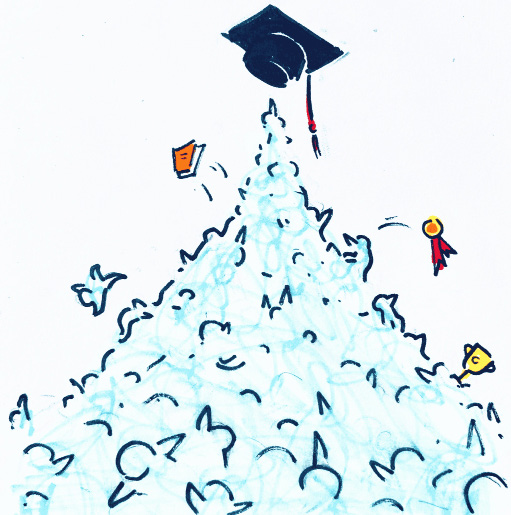Nobel Prize in Chemistry Honors the Growing Power of Women in Sciences
Only 57 women have been awarded a Nobel Prize out of more than 900 recipients.
This year’s Nobel Prize in Chemistry was, for the first time, awarded to an exclusively all-female team for their remarkable contributions to the human race. The awardees were Dr. Emmanuelle Charpentier, director of the Max Planck Unit for the Science of Pathogens, and Dr. Jennifer Doudna from the University of California, Berkeley. With their ingenuity and imagination, Dr. Doudna and Dr. Charpentier transformed an ordinary bacterial defense mechanism, most commonly known as CRISPR, into genetic “scissors” that can edit the genes of plants and mammals, including humans. Although it is not the only gene-editing tool, it is the most inexpensive and affordable one that scientists use today. Two women winning the Nobel Prize serves as a tribute to the persistent struggles of women in science.
CRISPR, which stands for “clustered regularly interspaced short palindromic repeat,” are tiny copies of viruses that are made by bacteria, stored in their DNA, and used to identify viruses in the future. As part of their immune response, bacteria use an enzyme called Cas-9 to cut viral genetic material. With this enzyme, scientists can now edit or remove any gene from a strand of human DNA. According to the New York Times, Dr. Francis Collins, director of the National Institutes of Health said, “This technology has utterly transformed the way we do research in basic science. I am thrilled to see Crispr-Cas getting the recognition we have all been waiting for and seeing two women being recognized as Nobel Laureates.”
Women have been contributing to science for centuries, yet they have been systematically excluded from the field and from many honors. According to the non-profit organization Catalyst, only 27% of those working STEM industries in 2019 were women, and they were paid 19% less than men. Only five women, out of 184 total recipients, starting with Marie Curie in 1911, have ever won or shared the Nobel Prize in Chemistry.
Currently, science is a male-dominated field and the same is true for the Nobel committee as well, leading to an implicit bias within the scientific community that favors men. Research institutions favor male scientists, who are more likely to be given the benefit of doubt than women and to be provided with additional resources. When women do cutting-edge research and people undermine their work, the progress of humanity is hindered. The under-representation of women in science dissuades younger generations from pursuing STEM. Young girls and women need to see other women succeed in the field.
Although the ability to alter genes has raised ethical concerns among some, it is, by far, the most significant biological advance since the discovery of the structure of DNA by Francis Crick, James Watson, Rosalind Franklin, and Maurice Wilkins. From curing genetic disorders such as sickle cell disease or hereditary blindness, to agricultural techniques, to even bringing back extinct species, this tool can help support many scientific advances. In 2018, a Chinese scientist named He Jiankui helped produce the world’s first “designer babies” by editing human embryos to attack the virus that causes AIDS, prompting feelings of astonishment but also of shock and dismay in the international scientific community. This is not to criticize the tool but rather to describe the enormity of what the two scientists achieved.
According to Science magazine, at a press briefing, Dr. Doudna said, “I think for many women, there’s a feeling that no matter what they do, their work will never be recognized as it might be if they were a man. And I’d like to see that change, of course, and I think this is a step in the right direction.” The Nobel Prize in Chemistry being awarded to women is a step forward, and we need to keep up this march for equality. There has been a long history of the erasure of women in science and there needs to be further action taken to minimize this gender gap.





